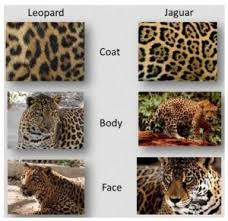This week’s big cat is often confused with leopards both have similar
brown/yellow base fur, with dark rosette markings. It is the Jaguar; however,
they have small dots or irregular shapes within the larger rosette markings. They
are also stockier and more muscular and have a shorter tail.
They are around 1.5 to 2.5 metres in length (5-8 feet), they are
between 70-120 kilos (154-265 pounds. Their life span is 12-16yrs and a litter
usually contains up to 4 cubs.
It is thew largest of the big cats to be found in the Americas,
they once inhabited between the southern states of the USA to the tip of South America.
However, now they are limited to the north and central parts of South America.
The number of Jaguars took a big dive in the 60’s and 70’s with
as many as 18,000 killer each year for their coats. Thankfully Jaguar fur is no
longer fashionable and there are many organisations trying to protect wild
animals.
They prefer to live in forest areas, but they have been spotted
around dry woodland and grasslands. Where they live affects their bodies, as in
those living in the forest areas are smaller than those living in open areas. The
forest dwellers also have a darker colour to them.
Where they live also effects how they hunt, those close to humans’
hunt at night, those more in the wild hunt during the day. They hunt cattle,
horses, deer, reptiles, monkeys and fish. They can climb trees but not as good
as Leopards can.
They were revered in ancient cultures, the Mayans believed they
were the God of the underworld and helped the sun travel under the earth at
night.






Amazing pattern on their coat. Beautiful animal.
ReplyDeleteIt is beautiful
DeleteYou noted that in the 1960s and 70s, 18,000 jaguars were killed each year for their coats. I know it is way too late today, but I would have hoped that the hunters and killers would be gaoled for life.
ReplyDeleteI agree, it was horrible to kill so many beautiful creatures
DeleteInteresting Jo-Anne. It's good news that they are not hunted today.
ReplyDeleteThat it is
DeleteAmazing and beautiful animals, I would love to see one in the wild someday.
ReplyDeleteThey are and so would I
DeleteOne of the most beautiful animals on earth.
ReplyDeleteSo true
DeleteSuch a shame all the animals killed for their fur alone.
ReplyDeleteI thought there was a difference between leopards and jaguars, but I didn't know what it was exactly. Thanks! :)
Killing for their fur is just so very wrong
DeleteSuch elegant cats, Jo-Anne. I can see why folks wanted to have coats made of their fur. So glad that can't happen any more! Blessings!
ReplyDeleteYes the fur coats would have looked nice but killing those beautiful animals was just so wrong
DeleteThat is very interesting about their coats, the Leopard vs Jaguar. Yes, thankfully fur is not longer wanted. Thank you for sharing.
ReplyDeleteI am pleased you liked the post and I am pleased they are no longer killed for their fur
DeleteI thought that was very interesting and the comparing between the two.
ReplyDeleteYes it is interesting
DeleteI've always thought Jaguars were the neatest of the big cats.
ReplyDelete